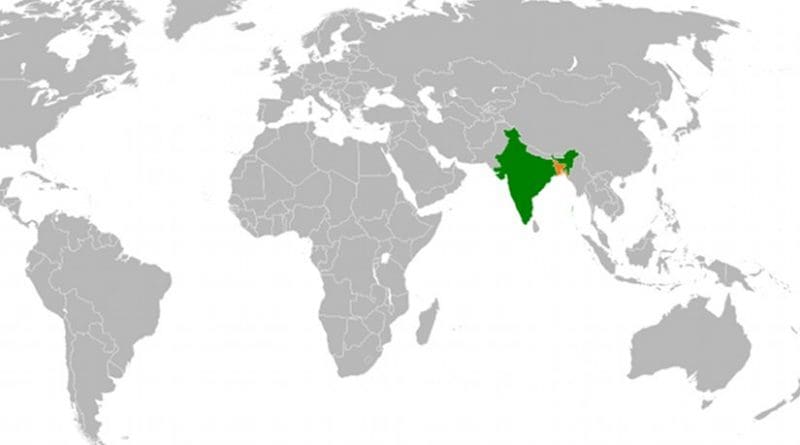India And Bangladesh: Growing Economic Alliance – Analysis
By Swadesh Roy*
In the last seven years, the relations between India and Bangladesh have been moving forward every day, albeit only within selective circles. It is interesting to note that while many softer issues remain to be settled, the hard-core concern related to the internal security of both the countries has been that sphere where much progress has been witnessed. And, in this, one of the land mark episodes has been the settlement of the land boundary issue between the two countries.
Since the carving out of Bangladesh from then East Pakistan in 1971, the boundary line between the youngest nation of South Asia and India became a source of contention between the two countries. Impacting the course of their politics as well as the lives of thousands of people, the dispute regarding the rather fuzzy boundary between India and Bangladesh had to be settled if sustainable and productive relations were to be established between the two. And, so it did when following the pro-active efforts of the incumbent Indian and Bangladeshi establishment, the Land Boundary Agreement, which was signed way back in 1974, was ratified in 2015. The exchange of enclaves between India and Bangladesh is currently underway and is expected to be completed by June 30, 2016.
With one of the most contentious issues between India and Bangladesh now settled, the two countries are now working together on the dimension of internal security. However, it is critical to note that the progress on this front is particularly contingent on the regime that will stay be in power in Bangladesh. If progressive parties and allies like the Awami League (AL) will continue to stay in power, then there are greater chances that things will run a smooth course between India and Bangladesh. However, should the rather extremist Bangladesh National Party (BNP) make it to the power corridors of Bangladesh, the prospects of cooperation between India and Bangladesh, and that too on the internal security front, are bound to dampen, for as is known, the BNP is rather close to the Pakistani Inter-Services Intelligence which has been averse to the Indian interests since its inception.
Given the political, economic and cultural clout that India possesses today, along with a geographical enormity and contiguity with Bangladesh, it is in the interest of the latter to keep the former closer. In fact, it would not be an exaggeration to suggest that creating and retaining productive ties with India is like a ‘natural necessity’ for Bangladesh. And, it is precisely for this very recognition that Bangladesh is making the effort to reciprocate India’s political and economic gestures towards it.
Although the presence of conducive political will is critical for the creation of mutually beneficial ties between India and Bangladesh, the economics of this association makes it appealing for both the countries to keep their differences aside. Governed by the requirements of economic demand, things are advancing on an upward trajectory.
Establishing greater connectivity is one of the most effective ways to bolster the economic alliance between India and Bangladesh. Governed by the ‘invisible hands’ of the market, while the creation of an extended, intertwined market between India and Bangladesh appears to be inevitable in a globalizing world, the presence of political will is critical for a quicker achievement of this desirable state.
In fact, discussing the future of economic ties between India and Bangladesh, the Finance Minister of Bangladesh, Abul Maal Abdul Muhith, indicated that in his opinion, free trade will start automatically between India and Bangladesh by 2025. However, in the meantime, he suggested that duties on goods coming from both sides can be eased.
*Swadesh Roy, writer and columnist, working as the executive editor of the Daily Janakantha, Dhaka, Bangladesh. He can be reached at: [email protected]

